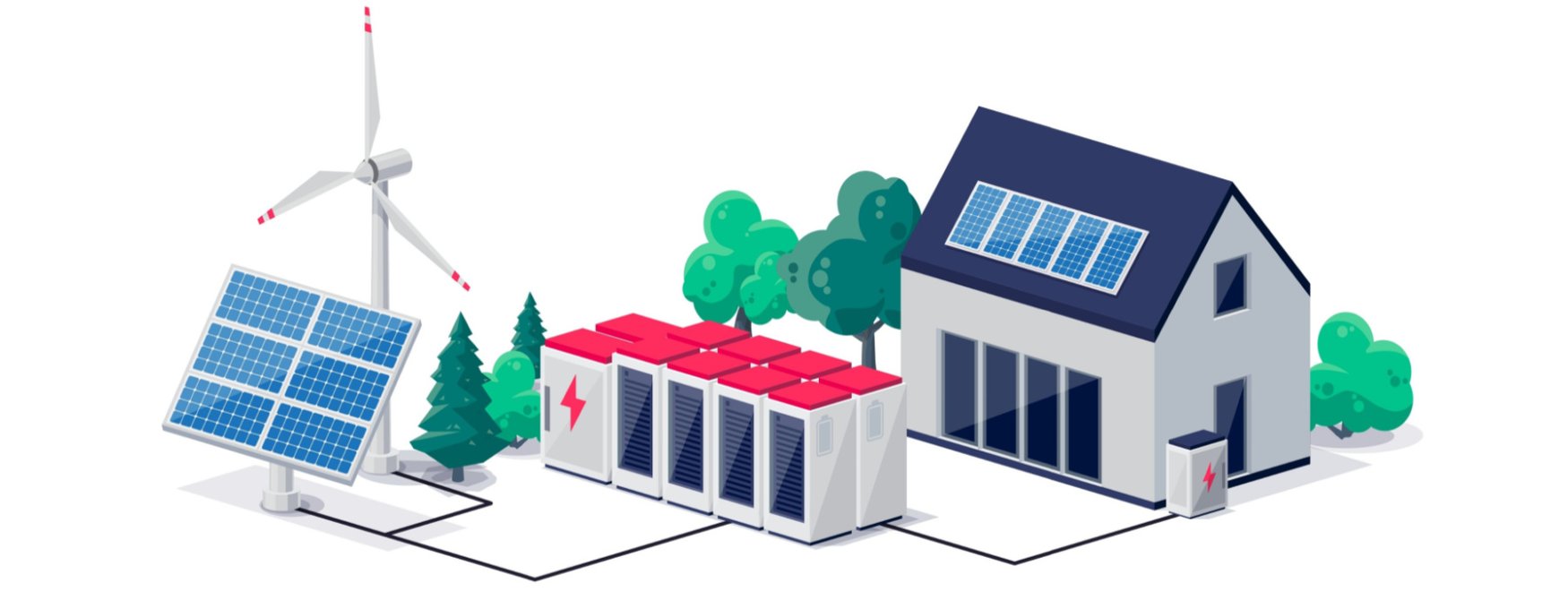Expensive Electricity: An Opportunity for Battery Systems

High inflation is affecting all sectors of the US economy, and this includes electricity tariffs. If you visit the US Energy Information Administration website, you can see how kilowatt-hour prices increased by 8.8% on average, from 13.30 to 14.47 cents/kWh. In the case of New York, the average electricity price increased by 9.4%, from 18.04 to 19.74 cents/kWh. Maine is the state that has suffered the highest price hike (40.3%), from 16.42 to 23.03 cents/kWh.
Expensive electricity is bad news for homes and businesses who get all their power from the grid. However, high kWh prices algo bring a greater opportunity to save with energy efficiency measures and renewable generation. For example, a solar array generating 100,000 kWh in Maine would have yielded $16,420 in annual savings in March 2021, but this figure increases to $23,030 at the latest prices reported by the EIA (March 2022). High kWh prices also improve the business case for batteries and other storage systems, since there are more savings available to cover their ownership costs.
Reduce your dependence on the local grid with solar power and energy storage.
Lithium-ion batteries have many promising applications in the renewable energy industry, since they remove the main limitation of wind turbines and solar panels. By themselves, these generation systems cannot deliver electricity on demand, only when their respective energy inputs are available. When solar panels and wind turbines are combined with energy storage, their electricity can be used at any time, regardless of wind and sunlight conditions.
How High kWh Prices Increase the Financial Performance of Batteries

Renewable power is now more affordable than fossil fuel power in many parts of the word, especially after the recent increase in natural gas prices. However, fossil fuels are still difficult to displace, since they can be counted on to generate electricity at any time. Solar panels and wind turbines may beat the cost of grid electricity, but when energy storage is added to the mix, the price advantage is often lost.
As a quick example, assume your electric company charges 16 cents/kWh, and you have a solar panel system with an average ownership cost of 8 cents per kWh produced.
- Going solar makes perfect sense in this case, since you save 8 cents/kWh.
- However, if you add a battery system with a round-trip storage cost of 10 cents/kWh, the price advantage disappears. Each kilowatt-hour generated, stored and retrieved has a total cost of 18 cents/kWh.
- Under these conditions, the most economic decision is using solar power when available, and relying on the grid to provide electricity that cannot be generated onsite.
However, if the electricity price increases from 16 to 20 cents/kWh, the energy storage system now makes sense financially. You are now saving 12 cents for every solar kWh consumed directly, and 2 cents for every solar kWh stored for later use. Previously, energy storage would result in a loss of 2 cents/kWh.
Using Solar+Storage Systems to Avoid Future Electricity Price Hikes

Commodity prices are impossible to predict accurately, and this applies for natural gas and grid electricity. However, many experts agree that energy prices in general will continue rising, considering global supply chain issues and the conflict in Ukraine. This is especially true during the summer, since air conditioning drives up electricity demand and prices.
When the grid is your only electricity source, there is nothing you can do to avoid price hikes. Energy efficiency measures can reduce your consumption, but your power bills will still increase along with kWh prices. On the other hand, a solar power system has a predictable ownership cost, and the same applies when you add energy storage.
When installing a solar+storage system, most of the ownership cost is assumed upfront, and there are only minor maintenance costs over time. Even if using a loan to install the system, you know exactly how much you will pay over time. On the other hand, there is no way to predict how much your electric tariff will increase during the next five years. Onsite generation not only saves you the current kWh price, but also any price hikes applied during the service life of the system.
With energy storage, you can take advantage of low wind and solar costs, even when wind turbines and solar panels are not active. The Biden-Harris Administration has announced a $3.16-billion bill to stimulate local battery production, which will be managed by the US Department of Energy. This can contribute to lower technology costs, while making the US less dependent on imported components.

Michael Tobias
Michael Tobias, the Founding Principal of NY Engineers, currently leads a team of 50+ MEP/FP engineers and has led over 1,000 projects in the US
Join 15,000+ Fellow Architects and Contractors
Get expert engineering tips straight to your inbox. Subscribe to the NY Engineers Blog below.



